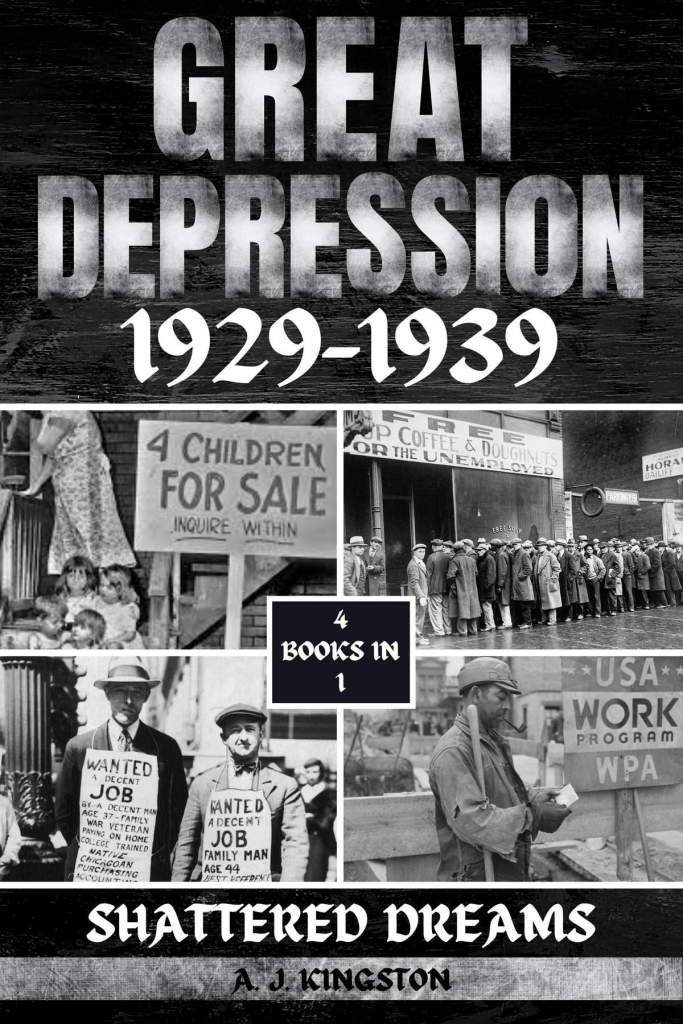
In October 1929, the roaring 20s came to an end with the wall street crash which led to the great depression in the usa where US unemployment rose, wages fell, homelessness sored and many died of starvation. In March 1933, democrat franklin believed that the government should be responsible for helping the US people, so he introduced the new deal which aimed to provide relief, recovery and reforms.
The new deal was fairly effective in solving and dealing with America’s problems in the 1930’s. Aspects of the new deal that will be discussed are, the role of Roosevelt and ‘confidence building’ and reforms for banking, agriculture and industry.
Table of Contents
Confidence building- great depression.
The Role of Roosevelt and ‘confidence building’ was fairly effective in solving America’s problems in the 1930’s. In order to achieve his three aims, in his first 100 days as president, roosevelt, set up 100 government or federal agencies that became known by their initials as the alphabet agencies that became known by their initials as the ‘alphabet agences’ to help solve the problems left by the great depression.
This was effective in solving America’s problem of the great depression as they showed immediate government action and helped many groups of people who had been affected by the depression as the agencies tackled a wide range of problems. However this was less effective as many politicians, such as the republicans continued to believe in laissez-faire, so were against so much government intervention in the economy, lessening the impact. To improve people’s confidence in the government and the banking system, Roosevelt gave over 30 ‘fireside chats’ from March 1933 which reached millions via the radio.
These were intimate talks that gave the impression that he was there in the listeners living room, and through these chats he declared ‘the only thing we have to fear is fear itself’. This was effective in solving America’s problems as millions listened to his chats which helped restore the nation’s confidence in the government and their actions, as many felt his confidence and willingness to communicate with the public showed. However this was less effective as there was many Americans who still felt distrust towards politicians as they had been let down before, so it would take more than chats to build total confidence.
Reforms for banking- great depression.

The New Deal Reforms for banking were very effective in solving America’s problems in the 1930’s. The 1933 banking relief act allowed the checking and closing of banks for 4 days (bank holidays), to ensure they were well run and credit worthy. Only ‘sound’ banks were allowed to reopen, and the hope was that this would restore public confidence in the banks and stop people from withdrawing all their savings.
This was effective in solving Americas problem of the great depression as people began spending more money and began depositing their money into the banks which strengthened the banking system and this helped the whole economy recover. However this was less effective as some felt this act was not enough and more government control of banking, even nationalisation (where government takes over) was needed to help economic recovery.
This was also less effective as some felt there were still weaknesses in the banking system as some felt the big banks overpowered and took over many small ones.
Agriculture- Great depression
The new deal recovery and relief act for agriculture was fairly effective in solving America’s problems in the 1930’s as in May 1933 the Agricultural adjustment act (AAA) was passed to make farming more effective by removing over production and to keep food prices steady. It paid farmers to grow less crops to limit the amount being produced in the hope that prices would increase and farmers would be better off.
This was effective in solving America’s problem of the great depression as it helped many large scale farmers increase their wages and profits meaning many were lifted out of poverty. However this was less effective as less was being grown and as labour saving equipment like tractors were introduced, many farm workers lost their jobs so continued to face poverty.
Industry- great depression
The new deal recovery act for industry was partly effective in America’s problems in the 1930’s. The public works administration (PWA) 1933 provided work for unemployed industrial workers in large scale work schemes, building dams, roads, schools and hospitals.
This was effective in solving America’s problem of the great depression since it created jobs for people, which meant they had money to spend in shops, which was good for the country’s economic recovery overall. However this was less effective as the scheme was incredibly expensive to run and now very efficient which has reduced the impact it had on the economic recovery.
The Tennessee Valley Authority (TVA) in 1933 aimed to build dams and power plants to provide electric power to rural areas along the Tennessee river in 7 states. This was effective in solving America’s problems as it provided work for thousands of construction workers and the dams provided cheap hydroelectric power for homes and industries, thus improving the economy in many different ways.

In conclusion, the New Deal was partly effective in solving America’s problem of the great depression in the 1930’s. Reforms for agriculture was less important, as although it helped save many farmers from poverty and losing their farms, many tenant farmers and workers continued to struggle or lost their jobs.
Reforms for FDR and ‘confidence building’ were more effective as although many remained unconvinced by the ‘fireside chats’, Roosevelt’s efforts restored millions of Americans’ confidence in the government and the banking system, which helped the economy. Reforms for banking were very effective as although some argued more needed to be done, many Americans’ faith was restored in the banks which helped recover the banking system and economy.
Overall, the New Deal was partly effective in solving America’s problem of the great depression in the 1930’s as although some argue it didn’t go far enough and didn’t help many Americans, it did go somewhat towards achieving it’s 3 aims by providing relief for millions of unemployed, help recover the economy and banking system and introducing reforms which demonstrated Roosevelt’s move away from laissez-faire style government.
For more on the great depression, click here!
